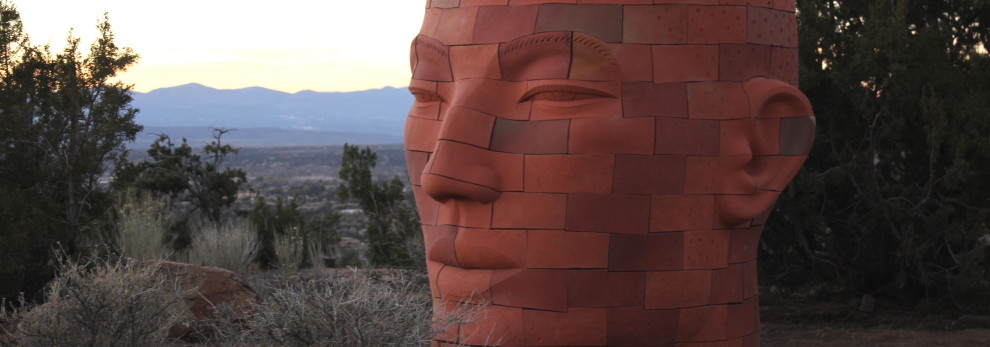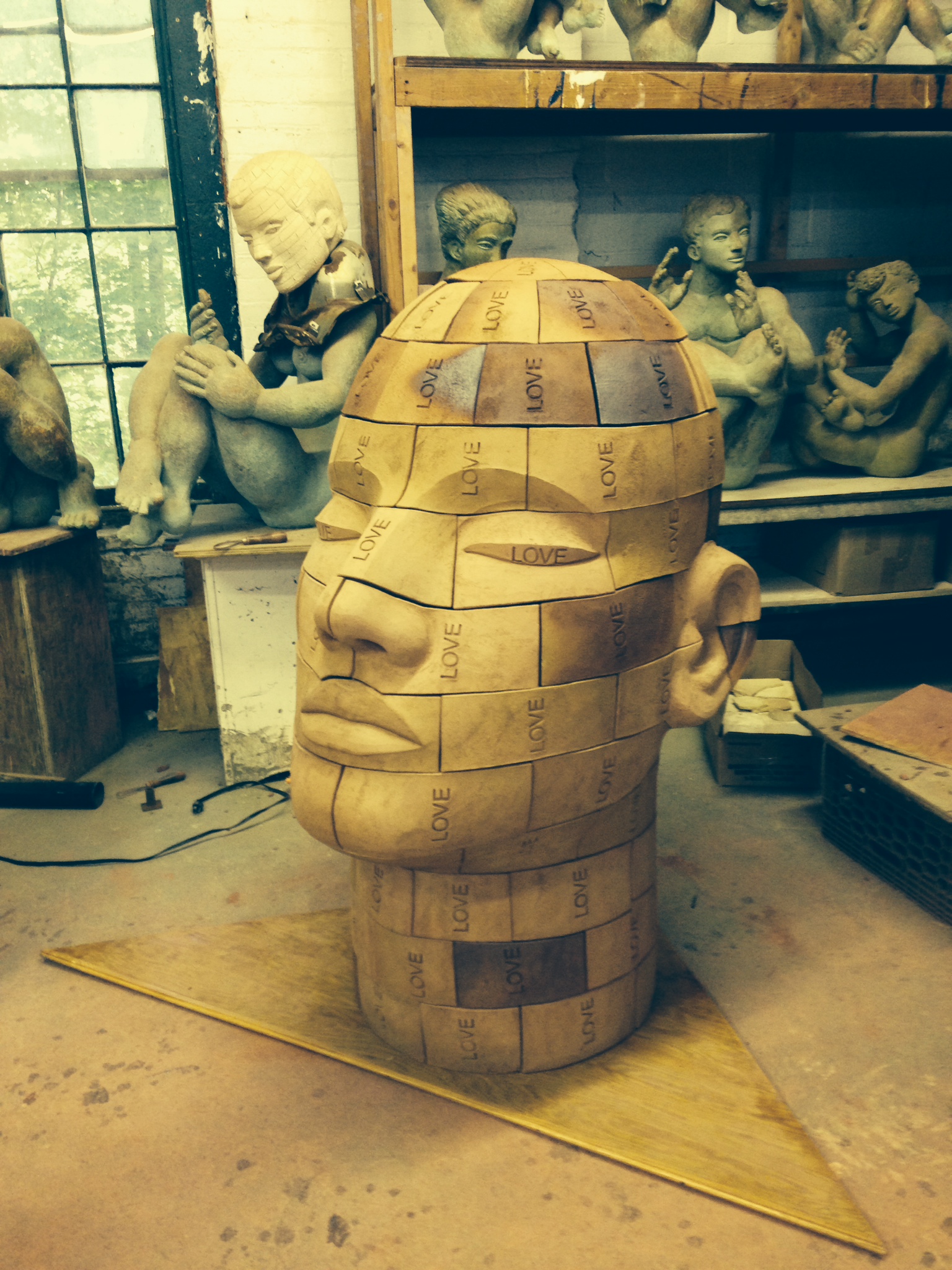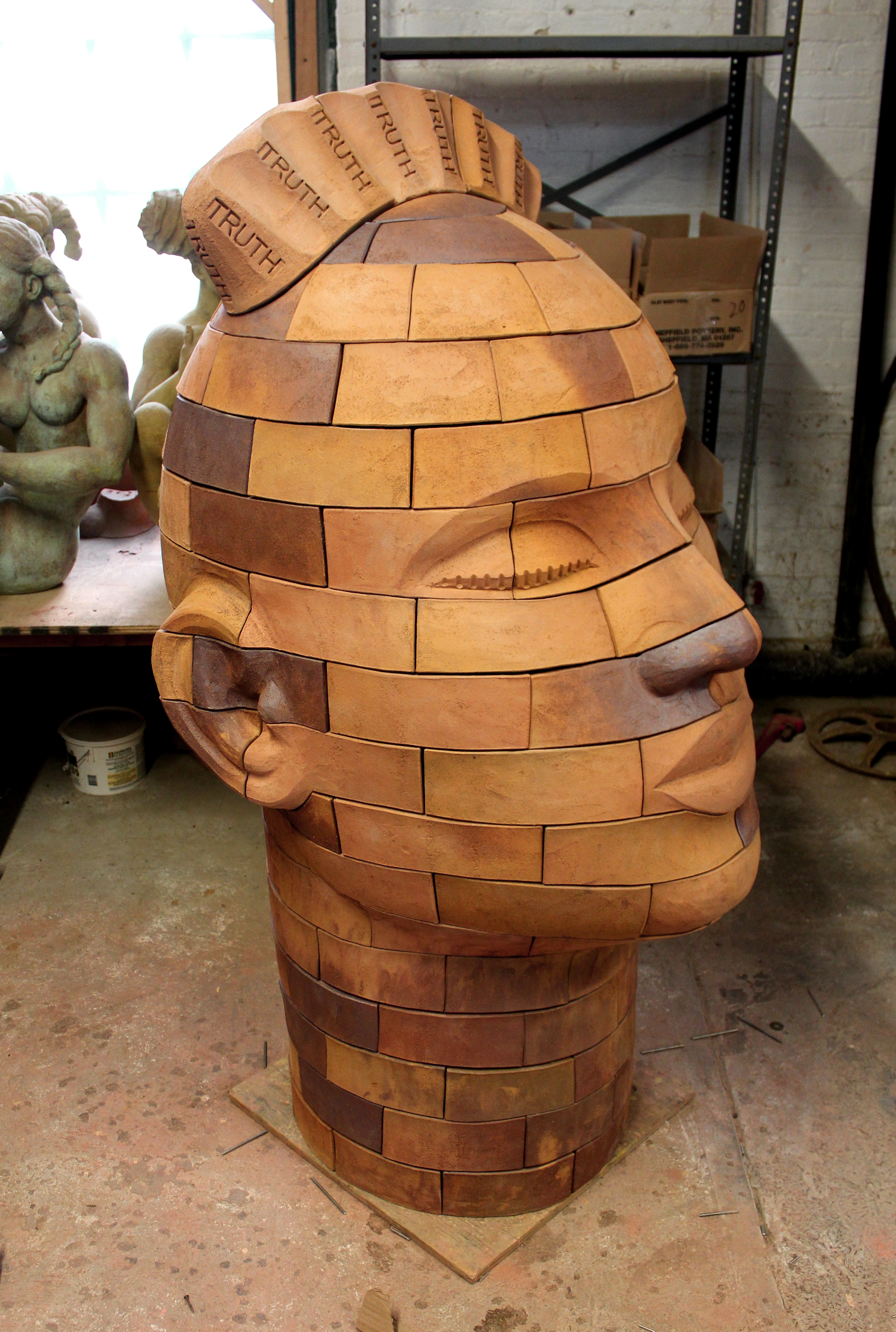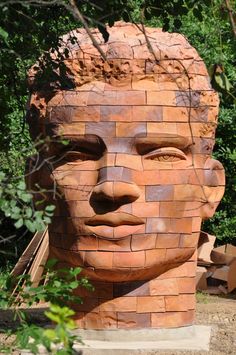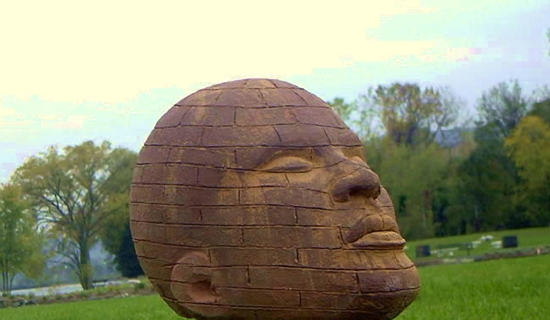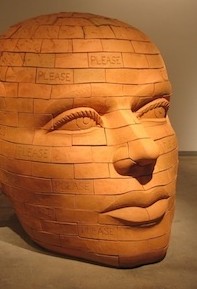James Tyler Biography
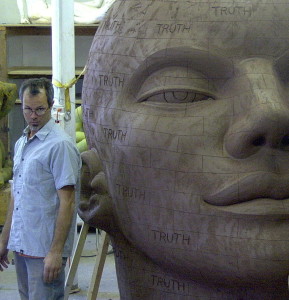
James Tyler’s Brickhead installations are unique colossal heads that invite us to identify with the world’s ceramic heritages. They bring today’s faces together with pre-Columbian, South American, Native American, Asian, African, and Western influences. Gallery Director Mark Ruschman noted, “There is something timeless in Tyler’s Brickhead sculptures, reminiscent perhaps of the temple carvings of Angkor Wat or the great Toltec heads of Central America. Yet they are clearly contemporary, relics of a civilization not yet past…The ponderous weight of the brick constructions is juxtaposed with the ethereal nature of time.” At the same, the heads are stylized portraits of everyman and everywoman. They are unique yet universal. They are us.
For ancient peoples, colossal stone and clay heads, such as those created by the Toltec, Olmec and other cultures in central Mexico, often symbolized their connections with the spirits they worshipped, and these, in turn, often represented the elements, such as rain and sun, or other larger-than-life phenomena, such as death and love. Each culture created large heads to suit its own purposes. The Toltecs created large ceramic heads symbolizing their indigenous culture and values, yet scholars differ in their analyses of the origins and meanings of these works. Tyler’s easy way of replacing the gods with our own visages is, in a way, Socratic. Socrates insisted that the gods on Mount Olympus were only representations of a higher being. By choosing to represent all of humanity, the here and now that exists outside of cultural considerations, Tyler is having his own Socratic dialogue with pre-Columbian artists.

